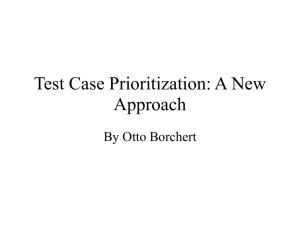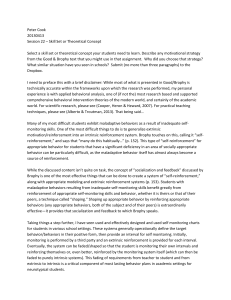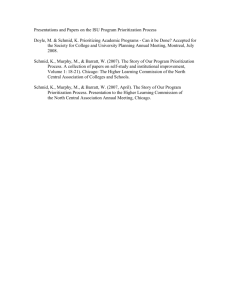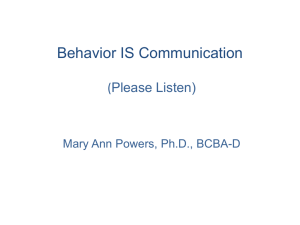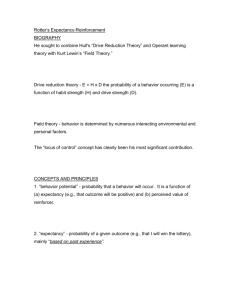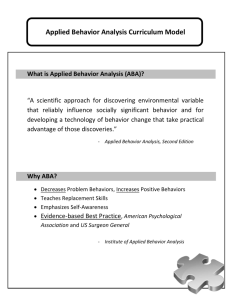Worksheet for Prioritizing Potential Target Behaviors
advertisement
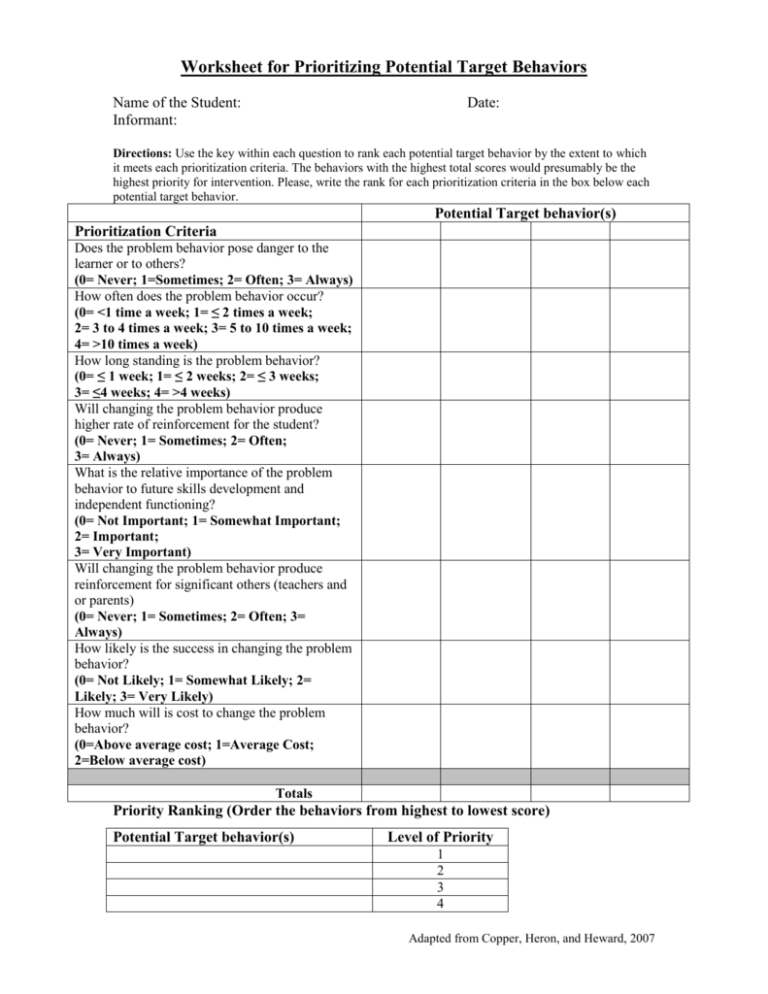
Worksheet for Prioritizing Potential Target Behaviors Name of the Student: Informant: Date: Directions: Use the key within each question to rank each potential target behavior by the extent to which it meets each prioritization criteria. The behaviors with the highest total scores would presumably be the highest priority for intervention. Please, write the rank for each prioritization criteria in the box below each potential target behavior. Potential Target behavior(s) Prioritization Criteria Does the problem behavior pose danger to the learner or to others? (0= Never; 1=Sometimes; 2= Often; 3= Always) How often does the problem behavior occur? (0= <1 time a week; 1= ≤ 2 times a week; 2= 3 to 4 times a week; 3= 5 to 10 times a week; 4= >10 times a week) How long standing is the problem behavior? (0= ≤ 1 week; 1= ≤ 2 weeks; 2= ≤ 3 weeks; 3= ≤4 weeks; 4= >4 weeks) Will changing the problem behavior produce higher rate of reinforcement for the student? (0= Never; 1= Sometimes; 2= Often; 3= Always) What is the relative importance of the problem behavior to future skills development and independent functioning? (0= Not Important; 1= Somewhat Important; 2= Important; 3= Very Important) Will changing the problem behavior produce reinforcement for significant others (teachers and or parents) (0= Never; 1= Sometimes; 2= Often; 3= Always) How likely is the success in changing the problem behavior? (0= Not Likely; 1= Somewhat Likely; 2= Likely; 3= Very Likely) How much will is cost to change the problem behavior? (0=Above average cost; 1=Average Cost; 2=Below average cost) Totals Priority Ranking (Order the behaviors from highest to lowest score) Potential Target behavior(s) Level of Priority 1 2 3 4 Adapted from Copper, Heron, and Heward, 2007


